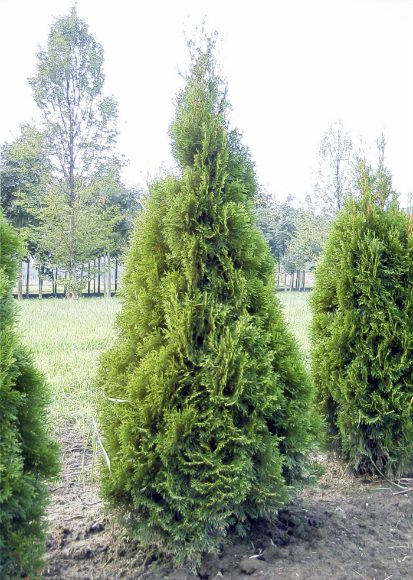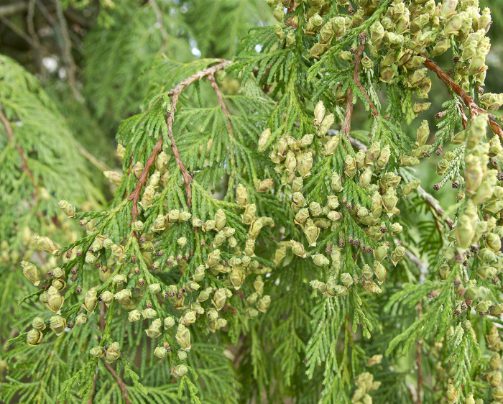Thuja plicata | Western Red Cedar
Native to North America, the Thuja plicata is a large, evergreen tree usually planted as a specimen tree in parks and large gardens. However, it's also a popular alternative to the Leylandii for screening and hedging because it is dense, but not fast growing. Green foliage is made up of flat sprays of scale-like leaves that release the aroma of pineapple when crushed. In spring the Thuja plicata produces small, green cones that turn brown as they ripen and mature. The reddish-brown bark shreds and peels with maturity. This tree is a long-lived specimen that thrives in any well-drained soil including chalk and clay, and it tolerates sun or shade. The Thuja plicata is widely planted throughout the world and there are many cultivars available that have gained the RHS Award of Garden Merit: Thuja plicata 'Atrovirens', Thuja plicata 'Excelsa' and Thuja plicata 'Zebrina'.

Thuja plicata is considered the Tree of Life by many First Nations of the Pacific Northwest. This tree gave them everything they needed to live; the bark, when tightly woven, created water-tight vessels for food and water, they used the trunk to make canoes and wooden boards to build houses, the bark for clothing and medicine. Spiritually, the boughs were used in many ceremonies. Some northwest coast tribes refer to themselves as "people of the Red Cedar" because this tree has provided materials for so many aspects of survival and living.






